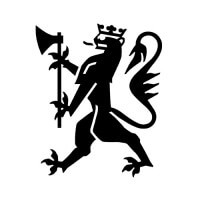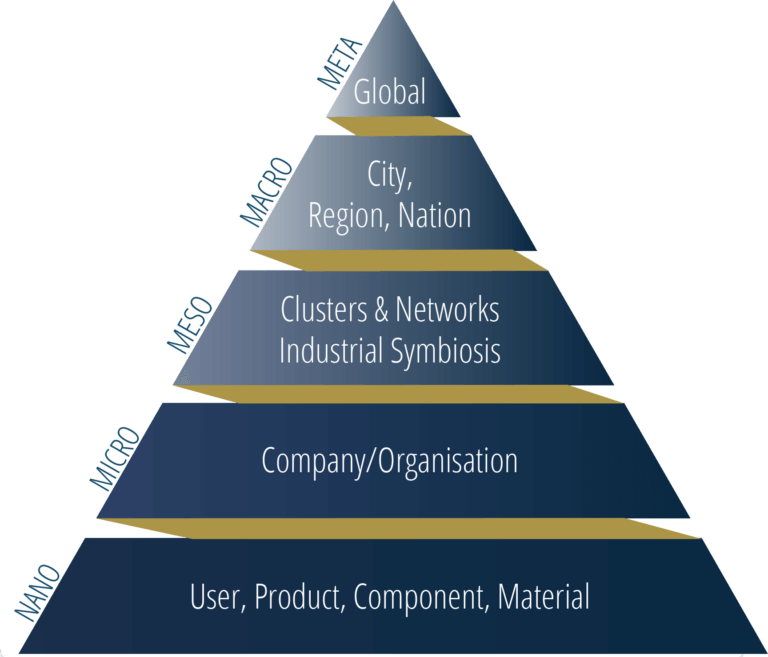BioDigSirk
Oslo, Oslo, Norway

ORGANISATION / PARTNERS




BUSINESS MODEL


FACET & LEVEL
-
Macro - Cities, Regions, Nations
Cities, Regions, Nations
-
Meso - Network, Cluster & Eco-Industrial Parks
Network, Cluster & Eco-Industrial Parks
-
Nano - User, Product, Component & Material
The circularity of products, components, and materials, included in three wider systemic levels, all along the value chain and through- out their entire lifecycle

SOCIETAL READINESS LEVEL & POTENTIAL
FUTURE POTENTIAL
CIRCULAR CYCLE PHASE

STATUS & TIMELINE
| Milestone title | Date | Content |
|---|---|---|
| Market system 3.0 | 01/2027 | Collaboration, raw material handling and digitization have become a competitive advantage. Measurably increased resource utilization and value creation. Ambitions for internationalization. |
| Market system 2.0 | 01/2025 | A better coordinated policy apparatus. Systematic work with actor dynamics and collaboration. Development of specific projects and resource-oriented value chains. |
| Market system 1.0 | 01/2023 | Letter of intent between the industries and the authorities. Mobilize broadly around increased resource utilization. Promise knowledge. Ensure framework conditions and contribute to specific projects making the potential visible. Reap early gains. |
| Report recommendations | 07/2022 | see link in description - available in Norwegian (original) and a draft english translation |
DESCRIPTION
If Norway is to become a pioneer in the development of a green, circular economy, a number of coordinated and strategic measures should be implemented over time.
- We have obtained factual evidence confirming that the current resource utilization in the bio-industries is not optimal
- We have identified large untapped potentials within some sectors, but there are barriers
- Our recommendation is that the authorities and the bio-industries work together to establish a market system
- The market system is established through 8 strategic moves
- Implementation involves one targeted process over time
- The work requires close cooperation between industries, the state, municipalities, counties and clusters
- The measurement criteria for success will be new biocircular value chains and measurably better resource utilization in all bionar industries
- The work should start with making one letter of intent signed by representatives of relevant business organizations and political leadership in relevant ministries
Full report (Draft english translation) LINK
The process that led to the recommendation:
- We have gained insight from over 20 players in the bio-industries and their documented sources
- We have obtained information from the strategy of a green, more circular economy and its knowledge base from 2021, as well as the Hurdalplatform
- We have conducted workshops with several of the actors and mapped their barriers, proposals for measures, and possible potential by implementing these measures
- We were able to map the industries’ arguments that spoke at an early stage for a market system, and requirements for this
- We also mapped a number of open questions and uncertainties regarding the establishment of such a system
- With the help of the industries, we have created a concept for measuring circularity / resource utilization that is easy to implement if you have the necessary data
- We have mapped which data sources we have where we can extract information about raw materials and residual raw materials from industrial processing in the bio-industries
- We have mapped the extent to which residual raw materials are utilized today, and we have mapped where the potential for further utilization may lie.
- We have created a data model that represents the information needed to operate a market system, and that keeps track of regulatory conditions, standards, raw materials and residual raw materials
- We have mapped out whether there are marketplaces today that fill the need, and possibly which are nearby / on the way to doing so
- We have implemented 3 demonstrators to show potential in a market system. Each of these has gained insight from the industries of the project and has directly led to 2 specific recommendations for further work
Anbefaling om tiltak for å bidra til at Norge blir et foregangsland i utvikling av en grønn, sirkulær økonomi i bionæringene.
Skal Norge bli et foregangsland i utvikling av en grønn, sirkulær økonomi, bør det gjennomføres en rekke koordinerte og strategiske tiltak over tid.
- Vi har innhentet faktagrunnlag som bekrefter at dagens ressursutnyttelse i bionæringene ikke er optimal
- Vi har identifisert store uutnyttede potensialer innenfor enkelte sektorer, men der er barrierer
- Vår anbefaling er at myndighetene og bionæringene går sammen om å etablere et markedssystem
- Markedssystemet etableres gjennom 8 strategiske grep
- Gjennomføring innebærer en målrettet prosess over tid
- Arbeidet krever tett samarbeid mellom næringene, staten, kommuner, fylker og klynger
- Målekriteriene for suksess vil være nye biosirkulære verdikjeder og målbart bedre ressursutnyttelse i alle bionæringer
- Arbeidet bør starte med å lage en intensjonsavtale som undertegnes av representanter fra aktuelle næringsorganisasjonene og politisk ledelse i aktuelle departementer
Rapport: LINK
Prosessen som har ledet frem til anbefalingen:
- Vi har hentet innsikt fra over 20 aktører i bionæringene og deres dokumenterte kilder
- Vi har hentet informasjon fra strategi om en grønn, mer sirkulær økonomi og dennes kunnskapsgrunnlag fra 2021, samt Hurdalsplattformen
- Vi har gjennomført workshop med flere av aktørene og kartlagt deres barrierer, forslag til tiltak, og mulige potensiale ved å gjennomføre disse tiltakene
- Vi fikk tidlig kartlagt næringenes argumenter som talte for et markedssystem, og krav til dette
- Vi fikk også kartlagt en rekke åpne spørsmål og usikkerhet omkring etablering av et slikt system
- Vi har med hjelp av næringene laget et konsept for måling av sirkularitet/ressursutnyttelse som er lett å implementere hvis man har nødvendige data
- Vi har kartlagt hvilke datakilder vi har der vi kan trekke ut informasjon om råstoffer og restråstoffer fra industriell prosessering i bionæringene
- Vi har kartlagt i hvilken grad restråstoffer utnyttes i dag, og vi har kartlagt hvor potensialet i videre utnyttelse kan ligge
- Vi har laget en datamodell som representerer informasjonen som skal til for å operere et markedssystem, og som holder styr på regulatoriske forhold, standarder, råstoffer og restråstoffer
- Vi har kartlagt om det finnes markedsplasser i dag som fyller behovet, og evt. hvilke som er i nærheten/på vei til å gjøre det
- Vi har implementert 3 demonstratorer for å vise potensiale i et markedssystem. Hver av disse har hentet innsikt fra næringene til prosjektet og har direkte ledet til 2 konkrete anbefalinger for videre arbeid
IMPACT
BARRIERS
ENABLERS
MATERIALS & CERTIFICATIONS
| material input | material category input |
|---|---|
| material output | material category output |
|---|---|
TECHNOLOGY & LICENSE
- TRL 2 - TECHNOLOGY FORMULATION
DATA & DATA-SHARING


| data related to | can be used to | Unit of measure | Data-sharing |
|---|---|---|---|
| Waste | Describe - What happens | Tonnes of waste | |
| Utilisation | Describe - What happens | % of material use |
Circular Case Studies by Circular Regions is licensed under CC BY-NC-ND 4.0
